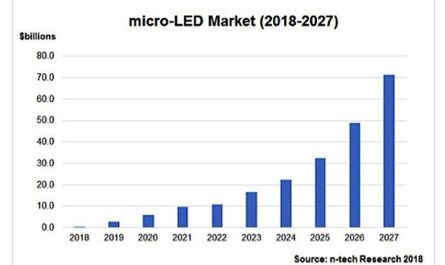The global Camera Lens Market is estimated to be valued at US$ 4,520.0 million in 2021 and is expected to exhibit a CAGR of 8.0% over the forecast period 2022-2030, as highlighted in a new report published by Coherent Market Insights.
A) Market Overview:
The camera lens market includes various types of lenses used in cameras to capture images and videos. These lenses are an essential component of any camera, as they determine the quality and clarity of the captured content. Camera lenses are used in both professional and consumer cameras, and their demand is increasing with the growing popularity of photography and videography as hobbies and professions. The market offers a wide range of lenses, including zoom lenses, prime lenses, wide-angle lenses, macro lenses, and telephoto lenses, among others.
B) Market Dynamics:
The camera lens market is being driven by two main factors: technological advancements and the growing demand for high-quality photography.
1. Technological Advancements: The camera lens industry has witnessed significant technological advancements in recent years. Manufacturers are constantly investing in research and development to create lenses with improved optical performance, faster autofocus, and better image stabilization. In addition, the integration of advanced features, such as automatic focus tracking and wide aperture settings, has expanded the capabilities of camera lenses. These technological advancements have resulted in the production of high-quality lenses that enhance the overall photography experience.
For example, Tamron Co. Ltd., one of the key players in the market, has introduced the Tamron 70-180mm f/2.8 Di III VXD lens, which offers excellent optical performance and a compact design. This lens is compatible with various camera bodies and is ideal for capturing nature, sports, and portrait photography.
2. Growing Demand for High-Quality Photography: The rise of social media platforms, such as Instagram, Facebook, and YouTube, has led to an increased demand for high-quality photography. People are now more inclined to capture and share visually appealing content, leading to the adoption of professional-grade cameras and lenses. Professional photographers and videographers are also seeking advanced camera lenses to enhance their creative capabilities and deliver superior results to their clients. As a result, there is a growing demand for camera lenses with features like wide apertures and superior image sharpness.
C) Segment Analysis:
The camera lens market can be segmented based on lens type, application, and end-user.
One of the dominant segments in the Camera Lens Market Share is the zoom lens. Zoom lenses allow users to adjust the focal length, enabling them to capture images from a distance without sacrificing image quality. These lenses are widely used in various applications, such as wildlife photography, sports photography, and event coverage. The ability to zoom in and out makes zoom lenses versatile and suitable for different shooting scenarios, driving their demand in the market.
D) PEST Analysis:
Political: The camera lens market is influenced by political factors such as government regulations, import/export policies, and trade agreements. Changes in political landscapes can impact the availability and cost of camera lenses in different regions.
Economic: Economic factors such as disposable income, overall economic growth, and consumer spending patterns influence the camera lens market. A booming economy and increased consumer purchasing power contribute to the growth of the market.
Social: Social factors, such as changing consumer preferences and the popularity of photography and videography as hobbies, play a crucial role in the camera lens market. The rising trend of capturing high-quality images and sharing them on social media platforms drives the demand for advanced camera lenses.
Technological: Technological advancements have a significant impact on the camera lens market. Innovations in lens materials, optical technologies, and autofocus systems contribute to the development of high-performance camera lenses.
E) Key Takeaways:
– The global camera lens market is expected to witness high growth, exhibiting a CAGR of 8.0% over the forecast period, due to increasing technological advancements and growing demand for high-quality photography.
– The Asia-Pacific region is expected to dominate the market during the forecast period, with countries like China, Japan, and South Korea being the major contributors. The region has a large consumer base interested in photography and videography, along with a growing disposable income.
– Key players operating in the global camera lens market include Haesung Optics Co. Ltd., Largan Precision Co. Ltd., Tamron Co. Ltd., Sunny Optical Technology (Group) Company Limited, Sunex Inc., Kantatsu Co. Ltd., Ability opto-Electronics Technology Co. Ltd., Genius Electronic Optical Co. Ltd., AAC Technologies Holdings Inc., SEKONIX Co. Ltd., and IM Co. Ltd.
In conclusion, the global camera lens market is witnessing significant growth due to technological advancements and the rising demand for high-quality photography. As consumers seek to capture and share visually appealing content, the demand for advanced camera lenses is expected to increase. Manufacturers are investing in research and development to introduce innovative lens technologies that enhance the overall photography experience. Additionally, the Asia-Pacific region is projected to be the fastest-growing and dominating region in the market.



